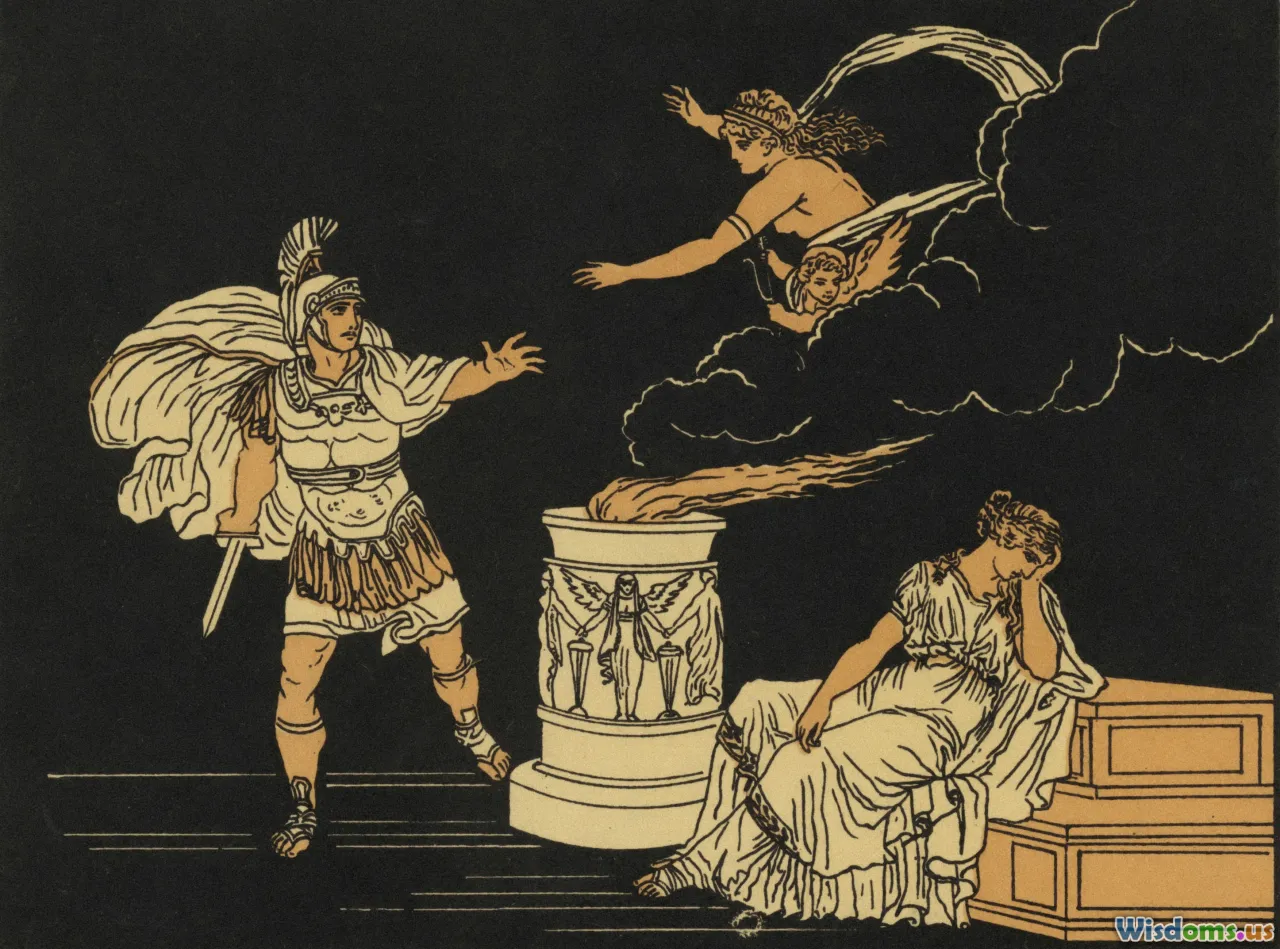
Buffy versus Xena Iconic Heroines Who Ruled the 90s
34 min read A sharp comparison of Buffy Summers and Xena: Warrior Princess—their origins, powers, themes, and cultural impact—exploring how two trailblazing 90s heroines shaped television, fandom, and feminist storytelling. (0 Reviews)
They weren’t just television characters; they were cultural lodestars. In an era humming with mixtapes, dial‑up modems, and third‑wave feminism, Buffy Summers and Xena of Amphipolis gave prime-time television two radically different templates for female heroism—and both became indispensable. One slayed vampires between algebra exams. The other contended with gods and her own violent past against panoramic New Zealand vistas. Together, they rewired what audiences expected from action, fantasy, and the notion of “strong female lead” as a whole. This is a deep dive into how Buffy and Xena ruled the 90s, why their legacies still shape today’s storytelling, and how new viewers can jump in without missing a beat.
What Made Them 90s Phenomena

The 1990s were primed for Buffy the Vampire Slayer and Xena: Warrior Princess. The decade’s cultural currents—“girl power” energy, expanding cable and syndication markets, and a gen‑X appetite for irony—met two shows that embraced camp while smuggling in weighty themes.
- Market context: Xena thrived in first‑run syndication, a distribution model that let local stations slot the show into weekends, capturing a broad audience beyond network gatekeeping. Buffy launched on The WB in 1997, rode a youth‑oriented wave, and later moved to UPN, proving its pull could carry an entire night’s lineup.
- Tone and appetite: The late 90s blended sarcasm with sincerity. Buffy’s quippy dialogue sat snugly next to grief, trauma, and adolescence-as-apocalypse. Xena’s giddy anachronisms—a warrior princess riffing on Greek myth while battling Romans and Norse gods—signaled an unapologetic, genre-literate swagger.
- Audience loyalists: Both shows cultivated early internet fandom. Message boards and fan sites were not a footnote—they were infrastructure. The result: organized rewatch parties, fan fiction archives, and the formative experience of “shipping” that helped define online fan culture.
The result was lightning in a bottle: two series that invited audiences to laugh at the premise and then stay for the character work. That alchemy is why both heroines stand taller than many bigger-budget contemporaries.
Origin Stories and Production DNA

Buffy began life as a subversion: what if the blonde in the alley turned around and won? Joss Whedon’s concept went through a misfired 1992 film before the 1997 TV series landed its tone. The show filmed in Southern California, with Torrance High doubling as Sunnydale High, instantly grounding the supernatural in the familiar. The production leaned into practical vampire prosthetics and relatively modest visual effects (CGI vampire-dusting that now screams late 90s) to keep costs manageable while still delivering spectacle.
Xena spun out of Hercules: The Legendary Journeys and became the crown jewel of Renaissance Pictures, produced by Sam Raimi and Robert Tapert. Shot in New Zealand, the series turned local landscapes into mythic backdrops. The production’s DNA fused B‑movie inventiveness with Hong Kong action inspirations; the crew embraced wire gags, imaginative props, and practical stunts that looked tactile and gave Lucy Lawless’s physicality room to define the character.
Two choices shaped both shows profoundly:
- Physical acting at the core: Sarah Michelle Gellar and Lucy Lawless were athletes as much as actors, anchoring combat scenes with commitment. Lawless’s high‑profile injury in 1996 (a fall from a horse during a promotional event that fractured her pelvis) forced the writers to adapt, sometimes leaning into tighter close‑ups, body doubles, and dialogue-driven episodes. Even the adjustments intensified audience attachment—when a production can pivot and still feel kinetic, you know the character is bigger than choreography.
- Writer’s rooms with distinct flavors: Buffy’s staff included Marti Noxon, Jane Espenson, and David Fury, writers who could thread horror with humor and long-arc payoffs. Xena’s team (R.J. Stewart, Steven L. Sears, among others) leaned on myth, morality plays, and redemption arcs. One “feels” the writers in both shows; that signature voice is part of why standalone episodes are still rewatchable decades later.
Tone, Genre, and Narrative Architecture

Both series mixed genres, but their recipes differed.
- Buffy’s architecture: A “Monster of the Week” scaffolding gave enough modularity for casual viewing, while each season built toward a Big Bad—The Master, Mayor Wilkins, Glory, and others—so that weekly metaphors accumulated into a thematic crescendo. High school is hell wasn’t a throwaway line; it was the blueprint. The day-to-day demons (bullying, grief, first love) paralleled literal demons.
- Xena’s architecture: Arc-heavy redemption interleaved with zany one-offs. The show could pivot from the operatic tragedy of Callisto to slapstick body-swap episodes, or even a musical odyssey, without losing its center. Rather than a single seasonal Big Bad, Xena often confronted her past as the antagonist: a warlord’s sins echoing across time, the gods as embodiments of temptation and consequence.
Tonally, Buffy skewed contemporary, intimate, and often claustrophobic (libraries, bedrooms, alleyways). Xena embraced mythic breadth and the brassy, bold color of syndicated fantasy. Yet both valued change: Buffy’s core crew graduated, moved out, and wrestled with adulthood’s complexities; Xena evolved from vengeance to mercy, while Gabrielle journeyed from naïve bard to confident warrior-philosopher.
Fight Choreography and Signature Weapons

A show’s action vocabulary says everything about its protagonist.
- Buffy’s style: Close-quarters brawling and improvisational urban combat. Stakes (sometimes literally named—Kendra’s “Mr. Pointy” becomes a talisman) and crossbows mingle with dustings that punctuate fights like exclamation points. Buffy often weaponizes the environment: splintered furniture becomes a tool; a fire hose becomes strategy. The slayer’s strength is cinematic shorthand, but choreography emphasizes agility and problem-solving over brute force.
- Xena’s style: Operatic flips, aerial kicks, and a balletic interplay with the chakram—Xena’s signature disc weapon that ricochets with cartoon-physics flair. The show’s fight scenes are theatrical, shaped by wide shots, sweeping camera moves, and that jubilant ululation. A sword in one hand, chakram in the other, Xena turns battle into spectacle.
Each weapon encapsulates a philosophy. Buffy’s stake is practical, intimate, and personal, befitting a hero who defeats monsters by facing human vulnerabilities. Xena’s chakram is flashy, mercurial, and symbolic of a hero who learned to redirect her own destructive momentum.
Action takeaway for creators: fight scenes work best when they reinforce character. Buffy’s scrappiness underscores resilience; Xena’s flair underscores a hero who commands the stage and reshapes destiny.
Sidekicks, Found Families, and Relationship Arcs

Neither heroine carries the narrative alone; each thrives within a constellation of allies who evolve as vividly as the leads.
- Buffy’s Scooby Gang: Willow Rosenberg’s arc—from shy hacker to powerful witch—stands as one of TV’s more intricate portraits of power and identity. Xander Harris provides human grounding and awkward loyalty. Rupert Giles is both mentor and surrogate father, a Watcher whose moral compass wavers in ways that challenge the Council’s dogma. Add Angel and Spike, each representing different shades of dangerous love and redemption; Anya’s demon-to-human journey; Tara’s gentleness giving Willow’s magic a moral root; and Cordelia’s evolution from queen bee to something far more. Their interpersonal dynamics are the show’s second beating heart.
- Xena’s intimates: Gabrielle is the definitive companion arc. Her staff fighting, her shift from chronicler to partner, and the pair’s eventual spiritual bond give the show its soul. Joxer supplies comic texture while surfacing the costs of hero worship. Antagonists like Callisto serve as dark mirrors—she is grief and vengeance made flesh—while Ares tempts with power and old habits, complicating Xena’s road to atonement.
If Buffy models the messy family you choose in a modern American town, Xena models a two-person epic where love—romantic, spiritual, or both—becomes a corrective to violence. Both ensembles, however, are living case studies in how to keep a long-running series fresh: let supporting characters change, stumble, and occasionally outshine the lead.
Villains and Antagonists You Love to Hate

Buffy popularized the term “Big Bad” for a reason. The Master’s operatic theatricality, Mayor Wilkins’s horrifying wholesomeness, and Glory’s godlike petulance gave each season a thesis. Spike and Drusilla added punk rock energy; later, the Trio satirized toxic fandom and the perils of treating reality like a sandbox. The best Buffy villains compress a teenage anxiety into a monstrous metaphor: the boyfriend who turns after sex (Angelus), the authority that demands conformity (the Initiative), the grief that steals your voice (“Hush”).
Xena’s antagonists trade psychological metaphor for mythic resonance. Callisto’s vendetta is tragedy, a cycle of pain that forces Xena to interrogate whether redemption is ever enough. Caesar embodies political cruelty and ambition. Ares is seduction-by-identity: a literal god asking Xena to be the version of herself she used to be. Gods in Xena are often capricious—because power without accountability always is. That dynamic turns Xena’s every victory into a moral referendum.
Both shows understand that a hero is measured by the caliber of her adversaries, and that the best adversaries reflect something the hero is trying to understand about herself.
Milestone Episodes to Watch First

New to both series? Start with a curated path that delivers flavor, impact, and manageable on-ramps. Avoid heavy spoilers while sampling their range.
Buffy starter path:
- Season 1, “Prophecy Girl”: The moment the title becomes a destiny, and Buffy becomes more than a wise-cracking teen.
- Season 2, “School Hard” and “Becoming” (Parts 1 & 2): Spike and Drusilla crash the party; the finale crystallizes the show’s capacity for tragic choice.
- Season 3, “Lover’s Walk” and “Graduation Day” (Parts 1 & 2): A tight blend of humor, consequence, and catharsis.
- Season 4, “Hush”: Nearly silent, masterclass in visual storytelling.
- Season 5, “The Body”: Raw, elegantly staged exploration of grief.
- Season 6, “Once More, with Feeling”: Musical episode that doubles as a character x‑ray.
Xena starter path:
- Season 1, “Callisto”: Sets up one of TV’s most compelling antagonist relationships.
- Season 2, “A Day in the Life” and “The Debt” (Parts 1 & 2): Tone range from day-in-the-life comedy to epic backstory.
- Season 3, “The Bitter Suite”: A musical odyssey of reconciliation that dares to experiment.
- Season 4, “The Ides of March”: High-stakes myth meets mortality.
- Season 6, “The Ring” trilogy and the two-part finale “A Friend in Need”: Ambitious mythology and a contentious, unforgettable ending.
How-to tip: Watch in release order to feel the evolution, but don’t fear selective sampling. These episodes showcase each show’s risk-taking and heart.
Feminism, Queer Subtext-to-Text, and Cultural Impact

Neither show is a perfect manifesto, and that’s part of their power—they wrestle with gender and sexuality in ways that feel alive rather than didactic.
- Feminist currents: Buffy literalizes the burdens placed on young women and then lets her reject them, quipping all the way. She challenges “chosen one” narratives by delegating power and questioning institutions (see the Watchers’ Council showdowns). Xena starts from accountability: a former warlord seeking atonement through agency, mentorship, and a vow to stop cycles of harm.
- Queer visibility: Willow and Tara’s relationship on Buffy was a watershed for network TV, portrayed with tenderness and narrative consequence. Xena and Gabrielle’s relationship evolved from deeply romantic subtext to explicit textuality as the series progressed, allowing a massive queer audience to see themselves reflected in epic fantasy.
- Representation limits: By today’s standards, both shows show their 90s context—casting diversity gaps, occasional reliance on tropes, and some story choices that have been reevaluated by modern audiences. Later public conversations around leadership and set cultures have prompted fresh critiques of auteur narratives and power dynamics.
Even with those caveats, the legacy stands: these series helped mainstream the idea that female-led genre shows can carry ratings, complexity, and cross-demographic fandom. You can draw a line from them to contemporary heroines across streaming platforms.
Humor, Music, and Aesthetics: Building a Vibe

Both series built worlds you could hear and feel.
- Buffy’s sonic palette: The theme by Nerf Herder tossed pop‑punk energy into every cold open. The Bronze, a teen club in Sunnydale, functioned as a recurring set that smuggled in real bands and gave episodes a youthful rhythm. Composer Christophe Beck’s score became the emotional connective tissue—melodic motifs cueing loss, resolve, and triumph.
- Xena’s auditory signature: Joseph LoDuca’s orchestral themes made the series feel like a weekly epic. The warrior’s rallying cry became one of the decade’s most instantly recognizable audio cues. “The Bitter Suite,” a full-on musical healing journey, demonstrated how sound could deepen narrative stakes rather than distract from them.
- Costume and visual language: Buffy’s contemporary fashion (leather jackets, pastels, torn sweaters with character logic) cemented her as both girl-next-door and urban guardian. Xena’s armor, bracers, and boots forged a silhouette as iconic as any superhero’s cape. The series leaned into a heightened palette—deep blues, forest greens, gleaming bronze—that felt mythic without being grimdark.
Aesthetics weren’t window dressing; they were storytelling tools. Buffy’s suburban nighttime alleys and Xena’s sun-drenched hillsides set thematic temperature before a word was spoken.
Fan Power: Early Internet, Conventions, and Legacy

If you participated, you remember. Modems shrieked, forums flourished, and fan-made zines and art bound strangers into communities.
- Terminology: Buffy normalized fan lexicon like “Big Bad” and “Scoobies,” while “Xenites” became a compact identity worn proudly at conventions. Shipping debates (Buffy/Angel vs. Buffy/Spike; Xena/Gabrielle vs. Xena/Ares) met passionate meta essays that predated social media longform.
- Conventions and charity: Cast members often embraced fan events; signed memorabilia auctions raised funds for causes, revealing fandom as an organizing force.
- Fan fiction as laboratory: Buffy spawned “fix-it” fic and genre mashups; Xena gave rise to the “uberfic” phenomenon, reimagining Xena and Gabrielle’s archetypes in modern settings as reincarnations or analogues. This practice influenced later AO3-era fandom norms.
The throughline: Fans weren’t passive consumers; they were co-authors of meaning. That participatory ethos is now standard for genre franchises.
Craft Lessons for Today’s Creators

Looking to build your own iconic heroine or long-running series? These shows offer a practical playbook.
- Make metaphor do double duty: In Buffy, a demon-of-the-week must map cleanly onto a human fear. If the stunt is cool but the metaphor is muddy, cut it. Test: can a character voice the human problem in a single sentence? If not, your monster concept isn’t ready.
- Anchor spectacle in consequence: Xena’s biggest battles resonate because choices echo across seasons. Maintain a living ledger. Build a “consequence bible” in your writers’ room noting each character’s sins, promises, and debts; revisit it before breaking new stories.
- Let supporting characters grow asymmetrically: Resist neat, parallel arcs. Buffy thrives when Willow surges while Xander stalls; Xena shines when Gabrielle’s pacifism confronts Xena’s pragmatism. Friction creates plot.
- Design signature action around philosophy: Choose a weapon or maneuver that literalizes a value. A boomerang-like chakram says “violence returns.” A concealed stake says “threat hides in everyday life.” This helps choreographers and editors align with theme.
- Schedule tonal palate cleansers: Interleave risk episodes (musicals, silent experiments, body-swap comedies) between heavy arcs to prevent emotional fatigue and to widen your show’s expressive range.
- Build a lore ladder: Introduce mythology in bite-sized rungs. Xena’s gods and pantheons scale up gradually. Buffy’s Watchers’ Council and Hellmouth mythos unfold in layers. A ladder beats a lore dump every time.
- Cast for chemistry as much as craft: Gellar-and-ensemble and Lawless‑O’Connor pairings are object lessons. Chemistry is the multiplier on your script’s intentions.
Action item: in development, write a one-page “tone treaty” capturing your show’s balance of camp, sincerity, and stakes. Share it with every department so wardrobe, music, and VFX speak the same language.
Where and How to Start a Modern Rewatch

Nostalgia is fun; intentional rewatching is better. A few practical tips:
- Decide your lane: Do you want the top-tier highlights or the full journey? Use the milestone lists above if time is tight; otherwise, watch sequentially for character continuity.
- Beware remaster quirks: Some syndicated or remastered versions shift aspect ratios or lighting, occasionally revealing production seams (wires, sets) not visible in original broadcasts. If authenticity matters, seek versions that preserve the original framing.
- Audio settings: Turn on dynamic range compression if available; 90s mixes can bury dialogue under effects on modern soundbars.
- Content temperature: Buffy’s later seasons interrogate depression, addiction metaphor, and complicated consent; Xena explores trauma, pacifism, and loss. If watching with younger or new viewers, set expectations and debrief after heavier episodes.
- Community: Recreate a 90s vibe with group watch threads. Modern platforms and forums host weekly rewatch clubs—join one to rediscover the communal joy that fueled these shows.
Practical watch order spin:
- For Buffy, finish a season before sampling the next to preserve Big Bad payoffs. If you must hop, keep an eye on character haircuts and relationships as continuity guides.
- For Xena, embrace tonal variety. After an intense arc like “The Debt,” follow with a lighter episode for balance.
Collectibles, Games, and Cross-Media Afterlives

Iconic heroines don’t fade when credits roll; they migrate.
- Comics and novels: Buffy continued with official “Season” comics that extended canon and experimented with scale. Xena’s comics—from 90s tie‑ins to later publisher revivals—played with historical mashups and character introspection.
- Video games: Console-era Buffy brawlers let players patrol cemeteries with a satisfying stake-parry rhythm, while Xena titles leaned into chakram mechanics and arena combat. They’re snapshots of early-2000s game design—chunky, earnest, and brimming with affection for their source material.
- Collectibles: Action figures, prop replicas (stake sets, chakrams), and trading cards turned living-room shelves into fandom shrines. Vintage market note: boxed first-run figures of either heroine can fetch notable prices at specialty auctions, especially variants and convention exclusives.
- Soundtracks: Buffy’s musical episode spawned singalong events; Xena’s orchestral suites find new life in concert recordings and fan remasters. A soundtrack isn’t just memorabilia; it’s a memory trigger.
Afterlives matter because they show a property’s elasticity. Both franchises proved that a character with a strong core can survive medium shifts without losing essence.
The 90s TV Toolkit: Budget, Effects, and Workarounds

Constraints sharpened both shows.
- Practical effects first: Buffy leaned on foam latex prosthetics and creature suits, reserving early CGI for quick flourishes like dustings or portal effects. This kept the tactile feel high and the uncanny valley low.
- Locations as character: Xena’s New Zealand locations provided grandeur on a TV budget. Meanwhile, Buffy’s Los Angeles-adjacent exteriors allowed familiar Americana to turn uncanny at dusk.
- In-camera creativity: Reverse shots, undercranking, and clever edit rhythms masked limitations. When Xena’s chakram needed to ping through improbable paths, the show trusted sound design and reaction shots as much as graphics.
- Editing philosophy: Both shows favor momentum over perfection. A slightly imperfect stunt read as “real” to viewers accustomed to over-polished blockbuster choreography.
Creator takeaway: Define what must look great (faces, key props, dramatic beats) and let everything else be suggestive. The mind fills gaps.
Why Their Endings Still Spark Debate

Finales are Rorschach tests. Buffy’s conclusion emphasizes empowerment through collective choice and hard-won adulthood; it asks whether distributing power dilutes myth or fulfills it. Xena’s ending embraces sacrifice and spiritual closure in a way that some fans treasure as courageous and others resist as needlessly tragic.
Both endings are honest to their cores: Buffy’s community wins by sharing power and responsibility; Xena’s redemption is costly and absolute. The debates persist because the characters feel real enough for us to argue over their fates as if they belonged to us. That’s the hallmark of potent myth-making.
Buffy vs. Xena: A Head-to-Head Lens That Illuminates Both

When people say “versus,” they often mean competition. Here, it’s an analytic lens.
- Setting as metaphor: Sunnydale’s Hellmouth externalizes teen pressure; Xena’s roving antiquity turns the map into an ethical landscape where each region mirrors a moral test.
- Power source: Buffy is chosen—her power is a legacy she later democratizes. Xena is self-made—her power is skill forged in darkness and honed by choice.
- Emotional architecture: Buffy rotates through first loves, found family, and grief’s curriculum; Xena’s core relationship is a long meditation on partnership, forgiveness, and mutual transformation.
- Risk appetite: Both took formal risks, but Buffy’s “Hush” and “Once More, with Feeling” recalibrated network expectations of what a mainstream show could attempt. Xena’s tonal whiplash—a feature, not a bug—proved that camp and tragedy can coexist in the same mythic frame.
- Pop culture residue: Buffy gave us “Big Bad,” the idea of a quip as defensive magic, and a blueprint for urban fantasy TV. Xena gave us the chakram silhouette, warrior-mentor archetypes, and the proof that syndicated fantasy could compete with primetime giants.
The comparison doesn’t crown a winner; it reveals how two different strategies for heroism can both resonate, sometimes with the same viewer at different life stages.
If You Loved One, Try This From the Other

Cross-pollinate your fandom with targeted episode swaps.
- If you loved Buffy’s “Hush,” try Xena’s “The Bitter Suite.” Both experiment with form to deepen character ruptures and reconnections.
- If you loved Buffy’s “The Body” for its raw realism, try Xena’s “The Ides of March.” Different tones, similar bravery in confronting mortality and consequence.
- If you loved Buffy’s season-long Big Bad structure, try Xena arcs around Callisto and Caesar for multi-episode antagonism with evolving stakes.
- If Xena’s physical bravura hooked you, visit Buffy’s “Graduation Day” for large‑scale action that still centers emotional choice.
Actionable trick: assemble a mini “liminal night” playlist—two episodes from each show that explore transition (graduation, redemption, sacrifice, rebirth). Watch in a single sitting to feel how each series navigates threshold moments.
The Long Shadow: How Their DNA Lives On

Modern TV is full of their fingerprints.
- Serialized storytelling normalized: Mixing season arcs with standalones is now baseline in genre TV.
- Women-led action series greenlit on the strength of character: The pitch “She fights monsters, but it’s about grief/guilt/growth” has a lineage that runs through these shows.
- Fandom as feedback loop: Writers’ rooms now anticipate discourse, a habit born in the 90s forums where Buffy and Xena fans sharpened knives and valentine pens alike.
Even the cottage industry around oral histories, reunion panels, and remasters owes something to the enduring magnetism of these heroines. They remain teachable texts, whether you’re a showrunner, critic, or a fan hitting play after a long day.
There’s a reason we still argue, quote, meme, and cry about them. Buffy and Xena didn’t just reflect a decade—they dared it to level up. And for many of us, when we need courage, we can still hear the vamp-staking guitar riff or the warrior’s battle cry, welcoming us back to two worlds that feel like home.
Rate the Post
User Reviews
Popular Posts


















